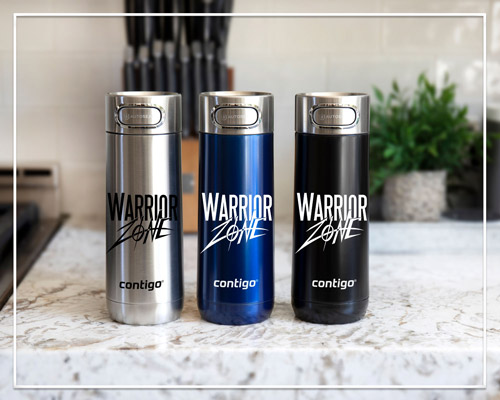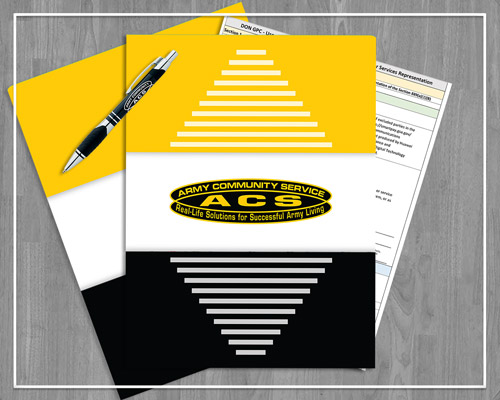Engagement
Factor 1) Suit the Product to the Recipient
If you are appealing to a wide audience, then something with broad utilitarian attraction works best. From the previous chart, we find pens, bags, drinkware and apparel items as coveted products.
On the other hand, if the items are intended for a specific group, you'll want something specialized for their needs. At the heart of any marketing effort is some understanding of your target audience.
-
Do they work in an office or at a desk?
-
Do they travel frequently?
-
What items might be useful?
-
What is their income level?
-
Are the decision makers buyers of your product or service?
A) Ensure it Fits Its Purpose
For example, you may wish to give something different to customers than prospects. After all, one may want a different message for customers than for prospects who have not purchased from the organization.
Choose promotional products that are useful and helpful to the recipient, like the tote bag at a trade show, or a shirt at a golf tournament, or a thumb drive for tech event. An item, no matter the mental effort that went into its selection is tossed if not useful. A recent industry study found promotional product usage achieved a 70 percent boost in brand interest and an 85 percent increase in positive brand impression due to the repeated brand exposure aspect of the product and subsequent usage.
B) Remember Quality Matters
Promotional items can leave a long lasting brand impression. Low quality products directly reflect on the brand and the people.
C) Competition. What are your competitors doing?
If you are at a tech trade show and most people will be distributing customized USB thumb drives, then we need to augment this with something more. Consider the factors and then find something that will be company unique. As an alternative, providing USB-powered tech products may attract prospects that would otherwise have passed by until they learned of the organizations branded products.
Factor 2) Event Consideration
Is the purchase part of a themed event? If so, it is important to keep the ad products targeted towards the concept. For example, an ocean side event would be a good place to give away personalized beach towels, bottles of sunscreen and summer headwear, but a winter event is better served with ice scrapers, warm clothing and blankets.
For conferences, recipients may carry paperwork and brochures, as well as the other promotional products they will receive. Good quality tote bags, cinch packs and backpacks are something that they will keep and use, maintaining brand visibility during and beyond the show.
Factor 3) Interaction
Selective giving increases your return on investment and personalizes the brand to the recipient. Do not hand out a branded product to everyone within eyesight. Target carefully for the biggest impact. Distributing a branded product to everyone at a trade show, lessens the item s value. Reducing the amount of branded products purchased while elevating the quality of the product, creates a desires effect on all those who are fortunate enough to receive the branded message conveyed by the promotional item.
Ensure the exchange of contact information from anyone who receives a promotional item. With current customers, the information is already in place. For new business opportunities, giving something without getting something in return is counterproductive.
Factor 4) Message
To complete your product gift planning, think
about whether there is a way to relate the promotional item to a
specific company service or campaign. If the product is linked to
the company
s message, then the
promotional product message will
reverberate as an ongoing mental message with the recipients. Include a CALL TO ACTION. The
item fails if you do not give the customer a residual way to take a
beneficial resulting action. Logo Web address and / or QR code Contact information Tagline Artwork Weigh & Measure Don't short circuit nor underappreciate good design
layouts. Matching design elements and color components with a selected
product, while assuring a quality production is not for the novice nor the
feint of heart. A general rule is good layouts take hours, great
layouts take days. Weigh the product image area against the message
components, making every effort to
maximize the message content, while balancing it against the visual
reflections coming off the promotional piece. Small image areas
require limits on everything, allowing the product quality and branding
simplicity to convey the message. Larger product image areas should be
designed with additional graphical elements to fill and balance the open message space with the
overall message content. Balancing both the message with
the product raises
the probability of a positive first and lasting impression that shines
on with the recipient and echoes into their social space. Accuracy is often overlooked but critical to
the message and justifies the expenditure. Check every pre-press
proof. Is the copy clear and legible? Is the phone number and contact info
correct? Are there any spellings errors? Send the proofs around to the supporting team
to verify accuracy. The busiest of times is when details are
overlooked. Factor 5) Budget
For a single product purchase, here is the equation:
-
Total available budget
-
Divided by the total number of targeted recipients
-
Equals the unit price available for the item
This is what is affordable and saves a ton of time when using the price Advance Search tool in our Promotional site
While budget is important, don t overlook the value of high quality products. Make sure the product is something the recipient is proud to display and the company is equally pleased to hand out. The spirit of the moment when the item is given and received is as important as any other step in a new relationship.
When in doubt, buy less quantity while raising the quality level of the item. This is true whether for an upcoming event or for marketing collateral inventory used throughout the year. A good example is the pen given to you at the bank. They are the least expensive pen in the industry costing less than $0.20 a piece. They are hardly used beyond the walls of the bank and are disposed of quickly.
For our clients, we recommend a brand name pen, even at the lower prices. Pentel, Scripto and BIC place their brand on the writing instruments they manufacture and the products last longer and feel more comfortable. This in turn generates a better impression with the organization s brand, which is then displayed more often.
McGRAPHIX Advertising Products manages client productions through affiliations with the largest Promotional Products suppliers in the industry. For insight into this innovative brand management industry, access our Promotional & More section.
For assistance, please feel free to contact McGRAPHIX Advertising Products. We are always happy to help.

